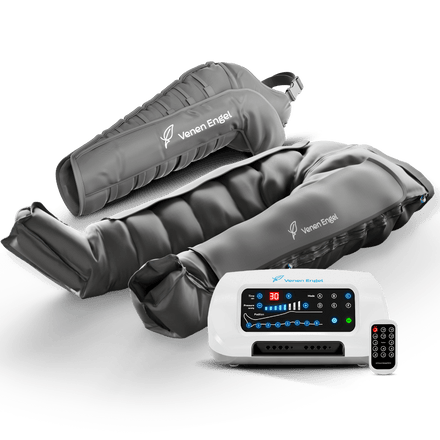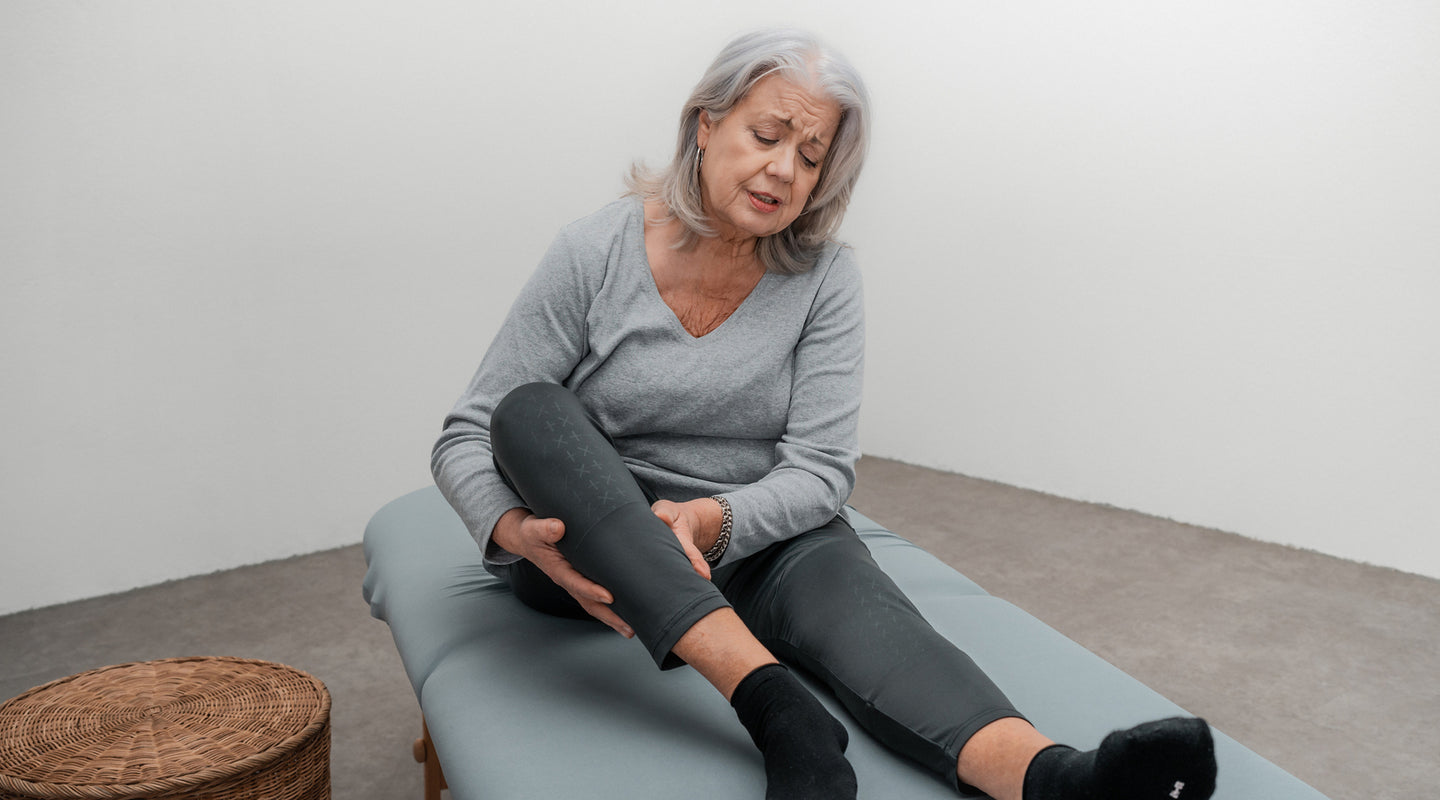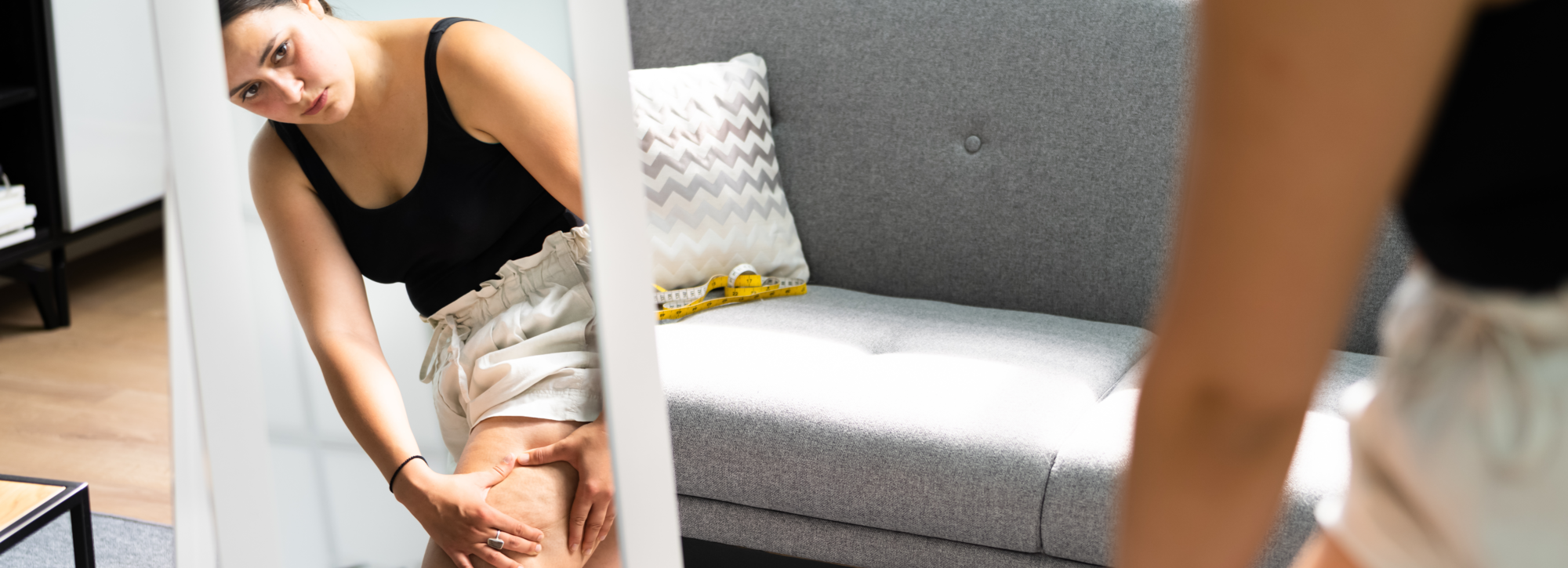
Recognize, Understand, and Address Lipedema
The hidden widespread disease lipedema. A painful and debilitating disease that can have serious consequences for those affected. After all, 10-18 percent of women aged 25-65 years suffer from it. Yet despite its prevalence, this disease is hardly recognized in public perception, and even the medical community overlooks and misunderstands what happens to those affected. So what happens with lipedema and what can affected individuals do about it?
Bei Menschen, die unter Lipödemen leiden, schwellen die Fettzellen vor allem an den Beinen oder Armen an. Die ständige Belastung der Lymphgefäße führt zu degenerativen
Changes in the lymphatic vesselsthereby increasing the transport capacity
is reduced. As a result, fluid remains in the tissue and leads to
Edema. If this condition persists over a longer period, it leads to
den betroffenen Stellen zu Entzündungen und
Collagen depositsThis collagen leads to an irreversible
Proliferation of connective tissue, a so-called fibrosis.
These symptoms are often misinterpreted and confused with obesity or dismissed as a simple aesthetic problem.
It is also hard to imagine what life with lipedema can be like: from the feeling of being invisible because doctors do not take it seriously, to discrimination by strangers when those affected try to accomplish everyday tasks, such as shopping in clothing stores. In this blog post, we also discuss why those affected deserve more attention to get the help and understanding they so urgently need.
What are the causes of lipedema?
The exact causes of lipedema are not known, but there are factors that can increase the risk of developing lipedema. These include:
- Hormonal Imbalance: This can be caused by fluctuations in hormones such as estrogen, progesterone, and testosterone.
- Genetic Predisposition: Certain genes may be associated with an increased risk of developing lipedema.
- Age: Lipedema occurs more frequently in middle-aged women than in men and children, probably because their hormones change during this time.
- Obesity: Being overweight or having an above-average Body Mass Index (BMI) can increase the risk of developing lipedema.
- Sedentary Lifestyle: Insufficient physical activity can contribute to the development of lipedema.
- Stress: Persistent high stress can lead to an increased risk of lipedema.
- Nutrition: A diet high in fat, sugar, and calories can increase the risk of developing lipedema.
- Trauma in medical history: Previous injuries or trauma to the legs and hips can contribute to the development of lipedema.
- Professions: Certain professions that involve long periods of standing, such as in the hospitality industry, can increase the risk of developing lipedema.
- Medical conditions: Certain conditions such as diabetes, hypothyroidism, kidney diseases, and lymphedema can increase the risk of developing lipedema.
- Medications: Certain medications, e.g., for the treatment of cancer, can cause lipedema.

What are the symptoms of lipedema?
As someone affected by lipedema, it can be frustrating to experience the symptoms of a condition that is often misunderstood. However, early identification and understanding of the signs are crucial to taking appropriate measures to alleviate the discomfort.
- Heaviness in the legs or arms: A common feeling of fatigue in the affected areas.
- Visible and palpable fat deposits and swelling in the legs, arms, and buttocks without corresponding weight gain.
- Sensitivity to pain in the affected areas: Pain in legs, arms, and buttocks, especially when pressure is applied and touched.
- Tendency to bruising and skin changes such as dimpling, similar to an orange peel.
- No change despite exercise or diets: Stubborn fat deposits that do not disappear despite regular exercise and diets.
- Restricted mobility and skin irritations in the affected area, often caused by swelling and pressure.
Identifying and understanding the symptoms of lipedema is the first step towards improving your quality of life. If you recognize yourself in the described symptoms, seek a consultation with a specialist in phlebology or lymphology to receive a well-founded diagnosis.
The Stages of Lipedema
The lipedema can due to its anatomical Divided into three stages of appearance and print condition The severity of the symptoms or the volume plays a role the edema does not matter.
Stage I: smooth skin surface, thickened subcutaneous fat tissue, fine nodular fat structure.
Stage II: uneven skin surface, rough, nodular fat structure.
Stage III: rougher and harder skin surface and subcutaneous tissue, large-lobed deformed fat lobes.
The lipedema pain can be especially severe in stage III be that the affected individuals in their Mobility and thus also significantly restricted in their daily life.
Everyday Tips for Lipedema
Everyday life with lipedema can be challenging, but there are some strategies that can help manage the symptoms.

Wear comfortable clothing: Lipedema is a fat distribution disorder that leads to an uneven accumulation of fat in the legs. Wear loose, comfortable clothing that does not constrict or exert additional pressure on the affected areas.
Move regularly: Regular exercise is important to promote circulation and improve mobility. Choose activities that strengthen your muscles and support lymph flow, such as swimming or cycling.
Pay attention to your diet: A conscious diet can help reduce inflammation and control lipedema. Avoid foods high in sugar and fat and instead focus on a meal plan with plenty of fruits, vegetables, and lean protein.
Use compression clothing: Wearing compression stockings or tights can help reduce swelling and alleviate the symptoms of lipedema. They also provide support and improve the appearance of the legs.
Seek regular medical advice: Lipedema is a complex condition, and individualized treatment is crucial. Medical advice from a specialist can help optimize your treatment and improve your quality of life.










